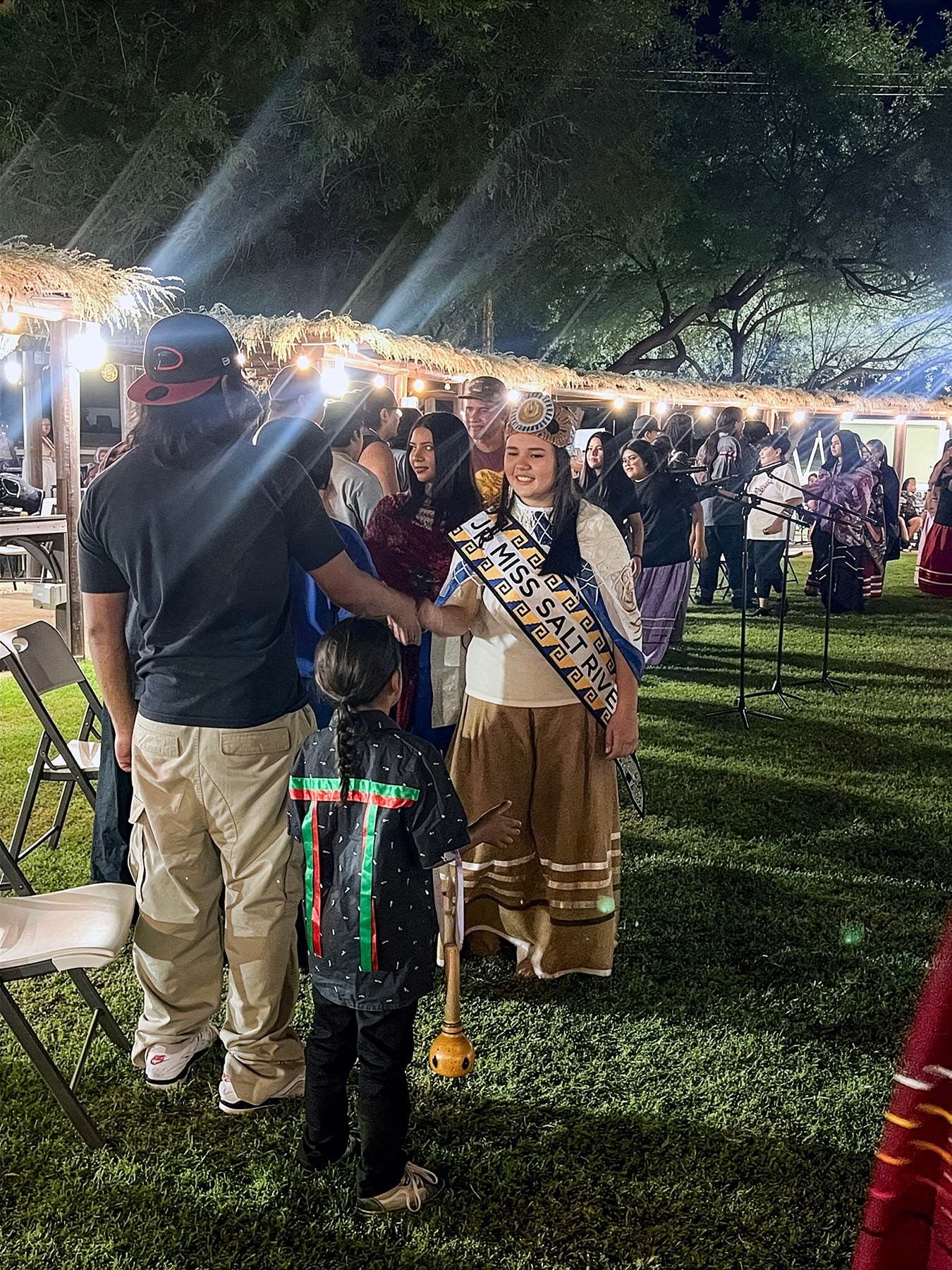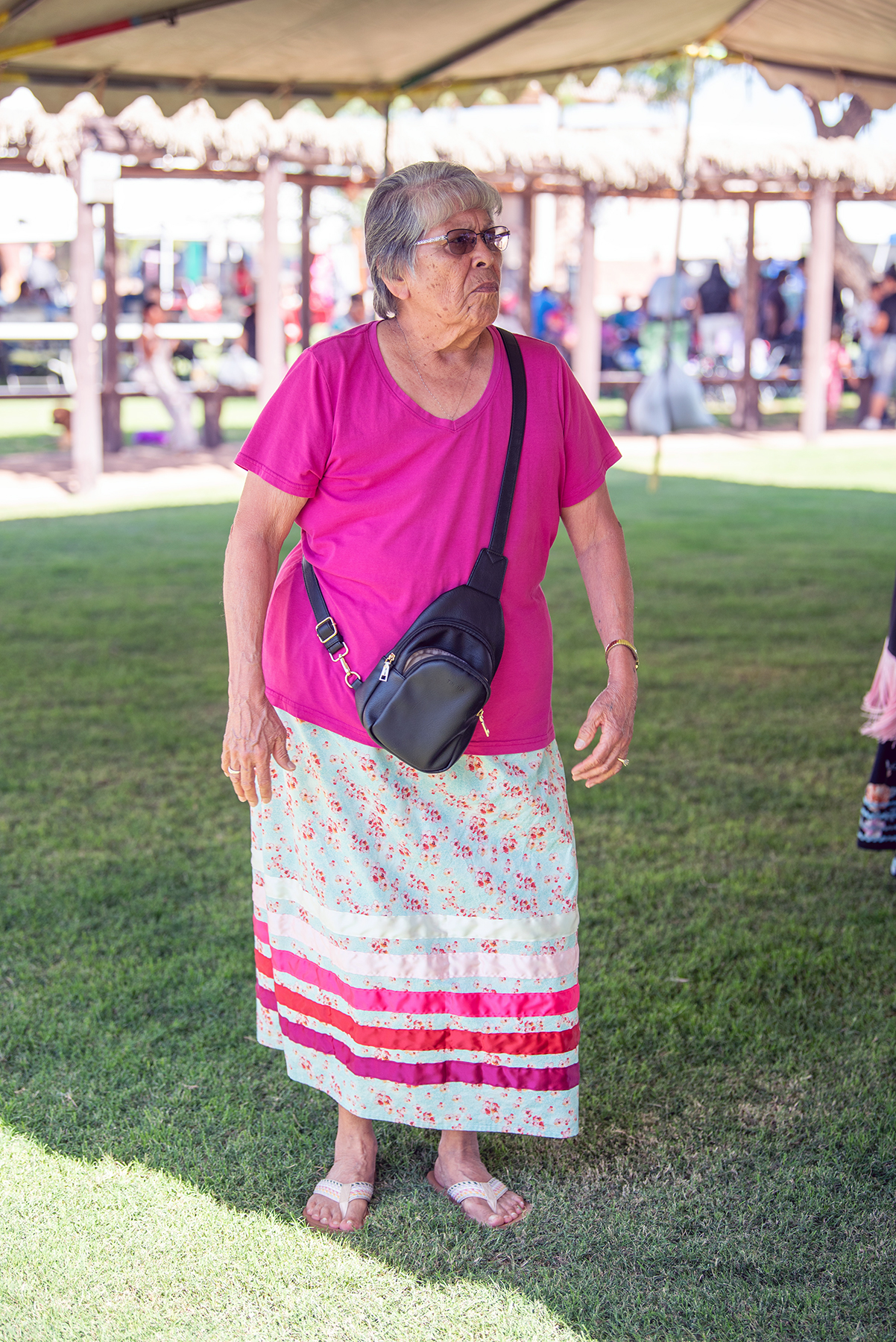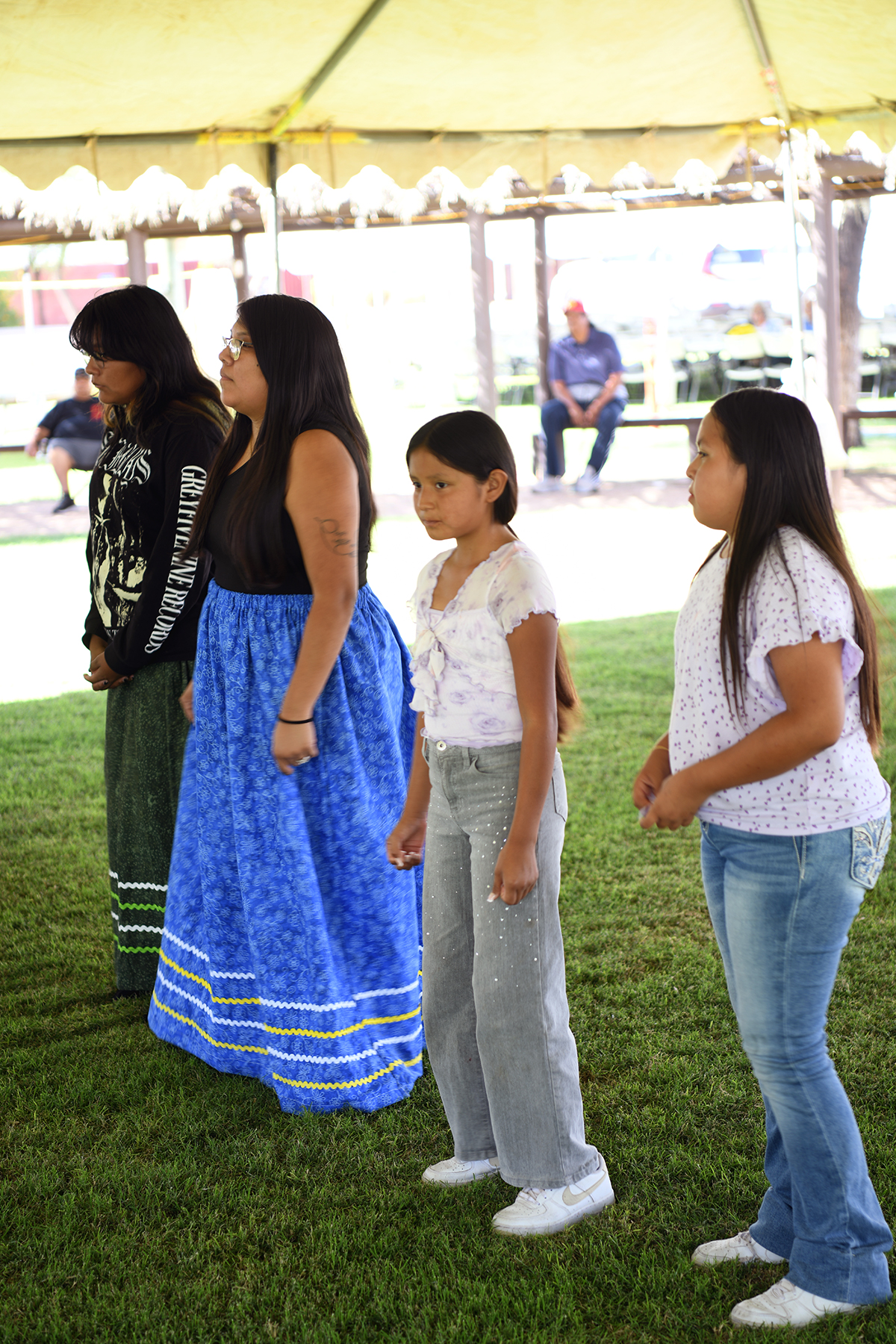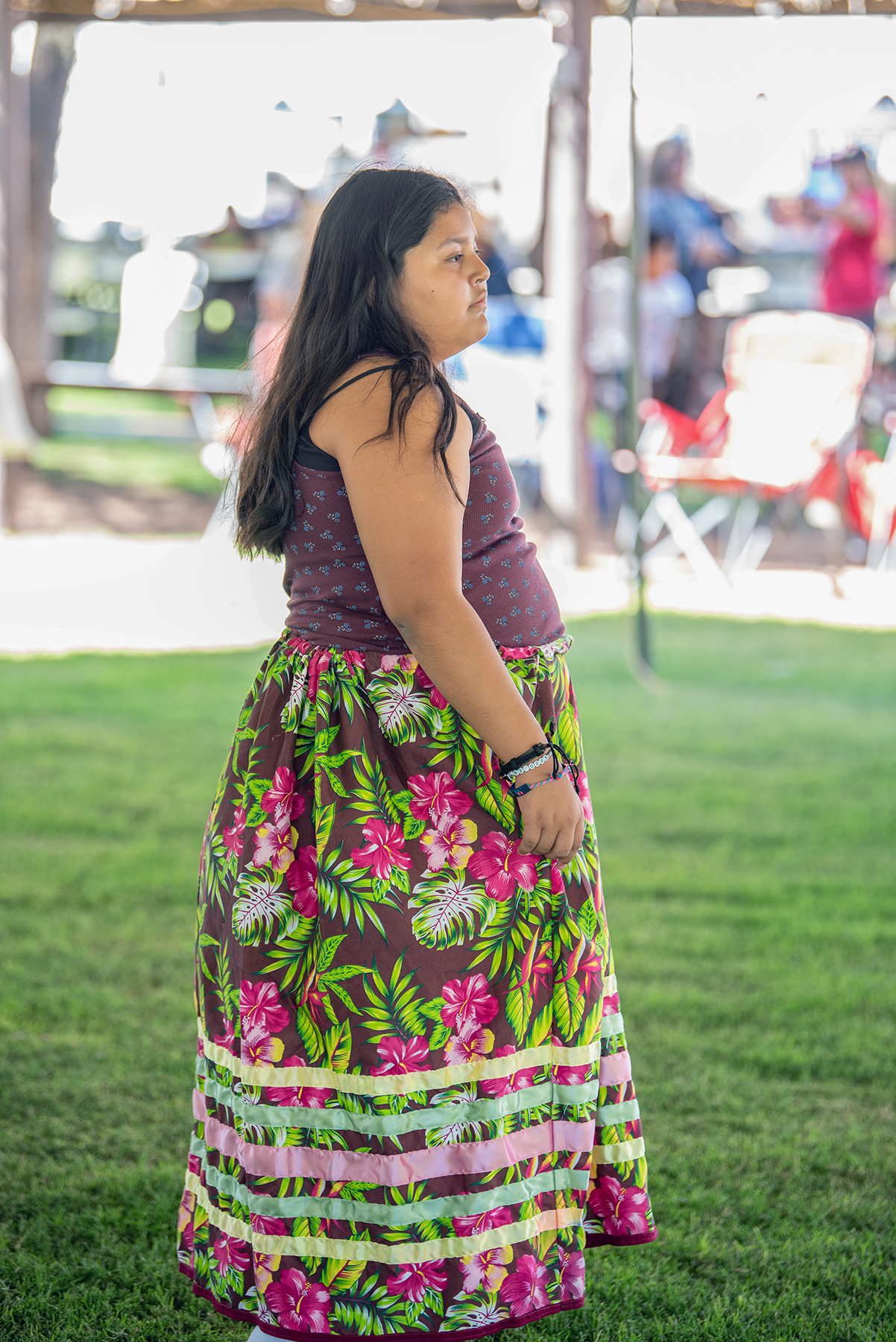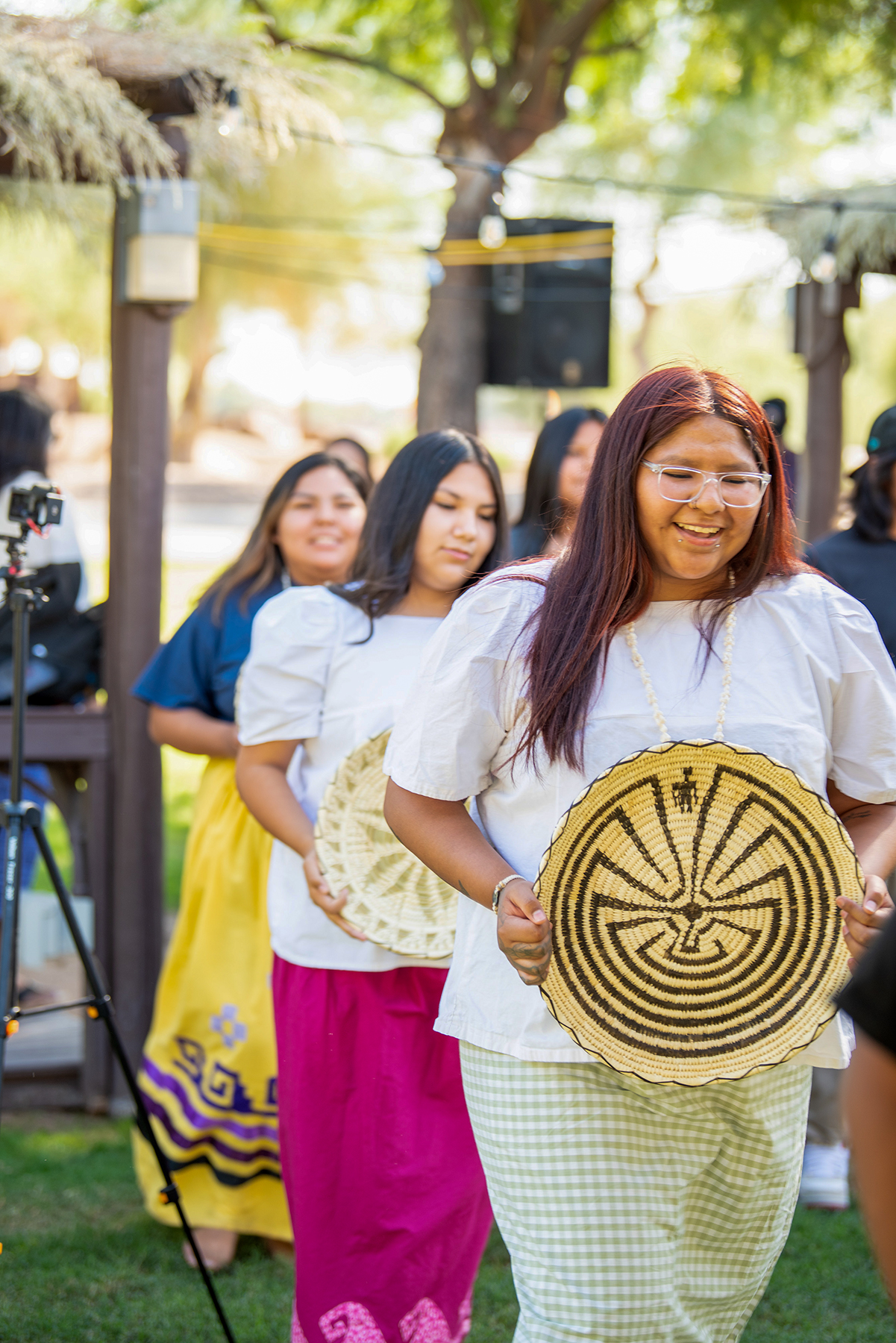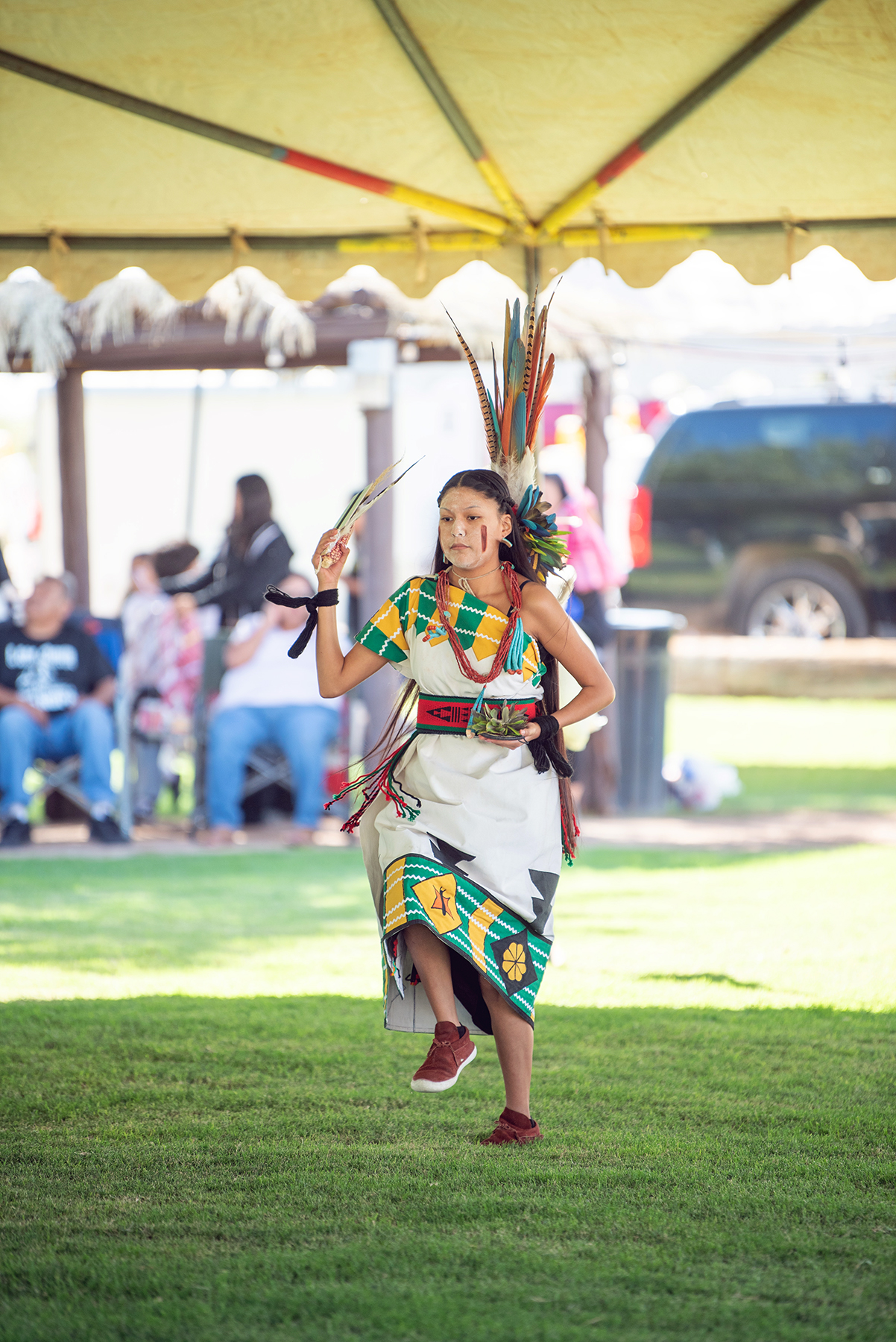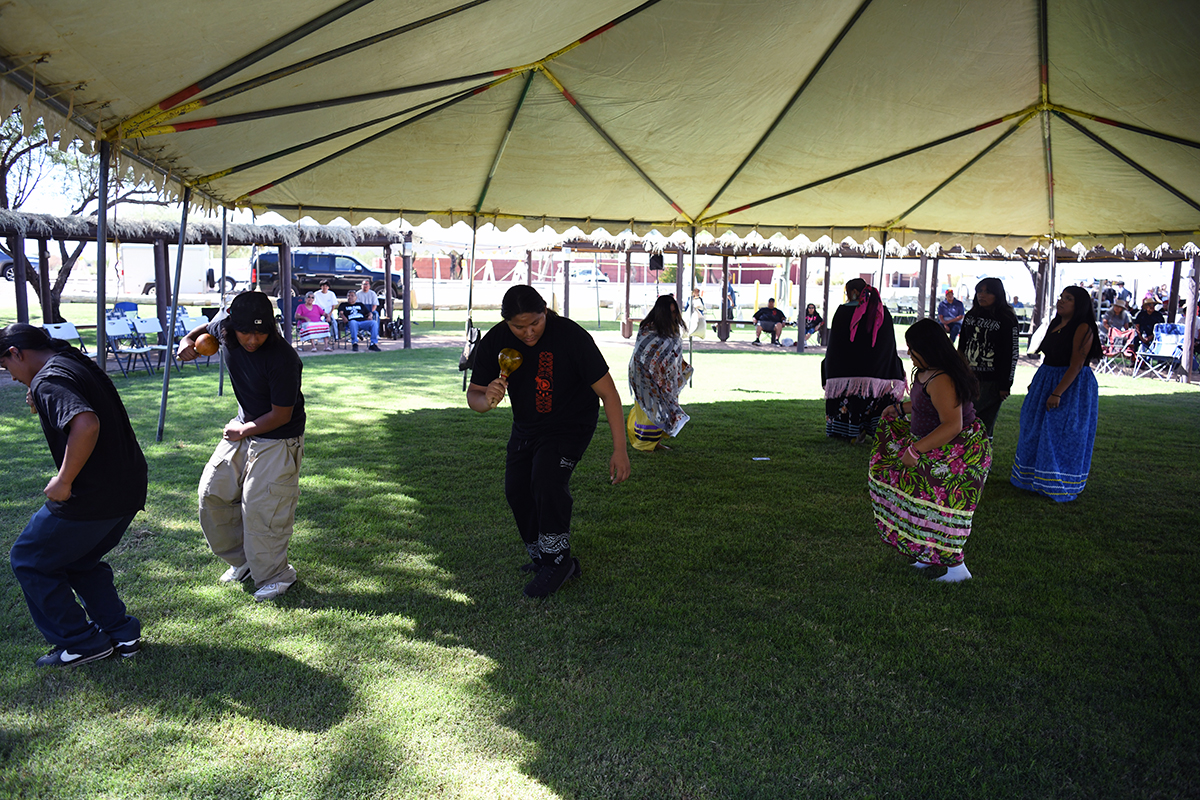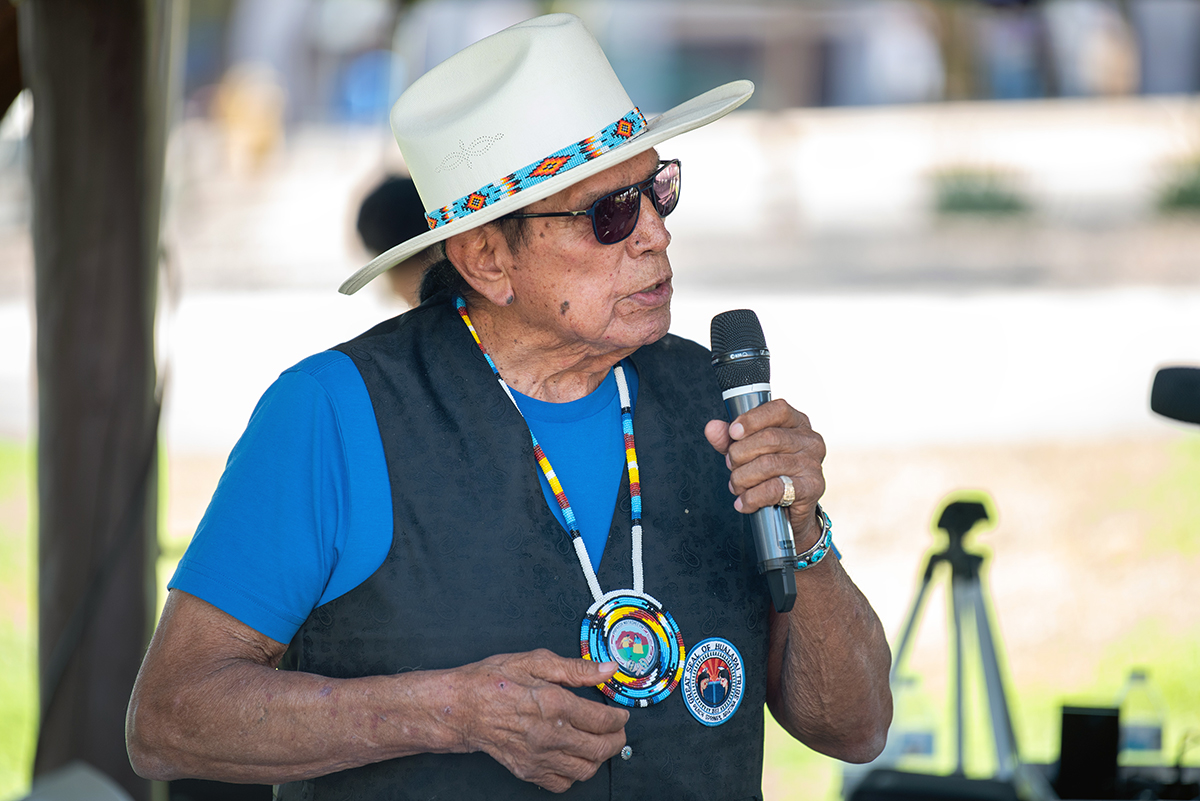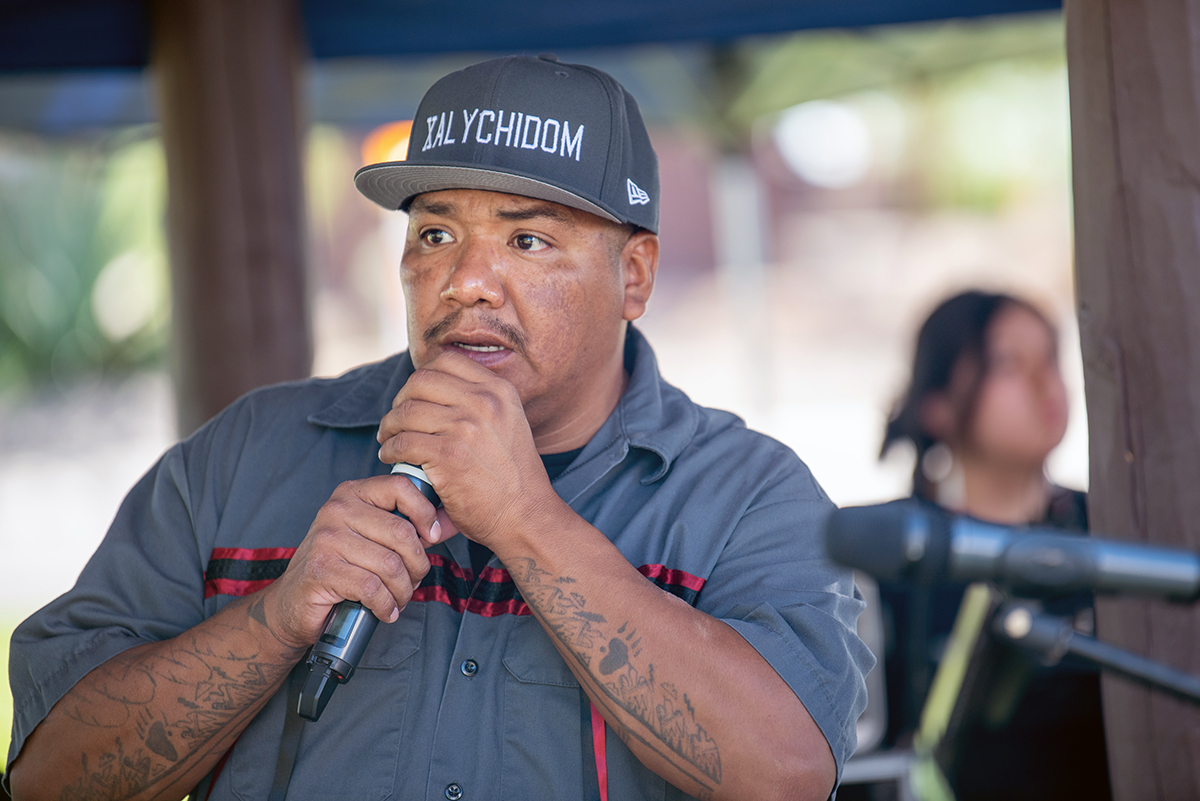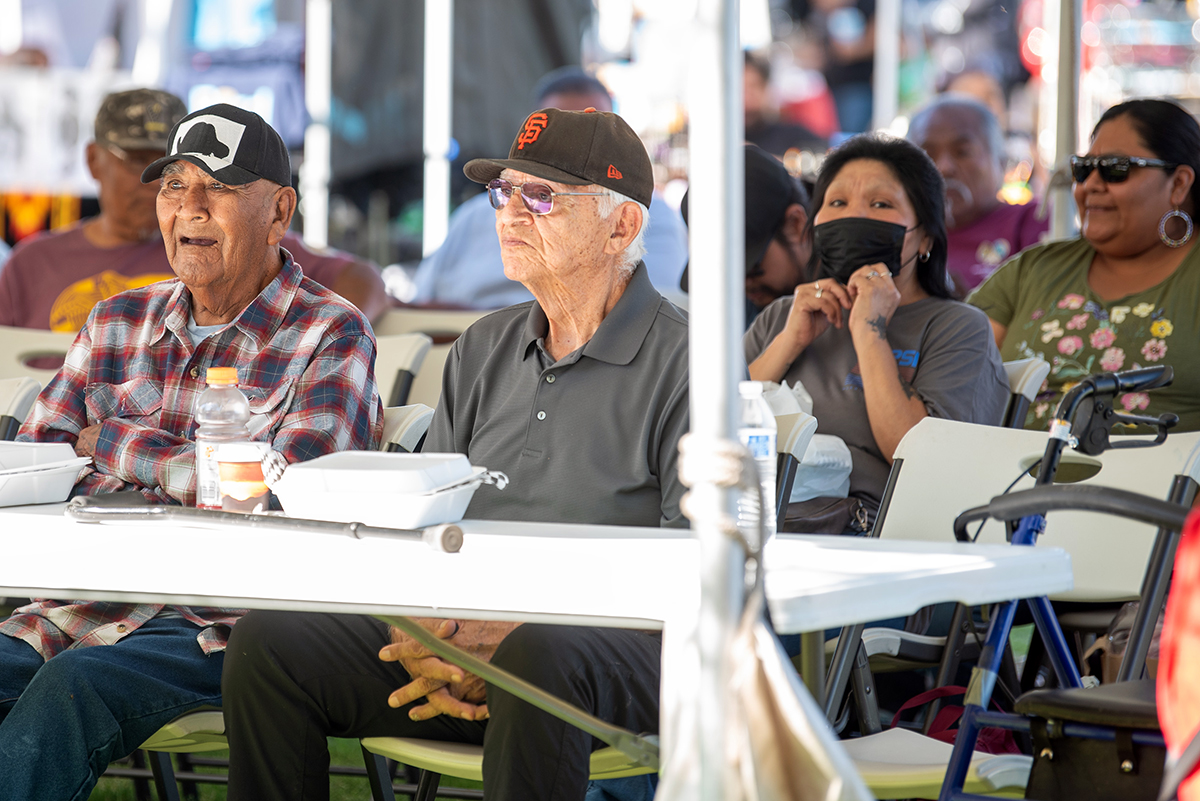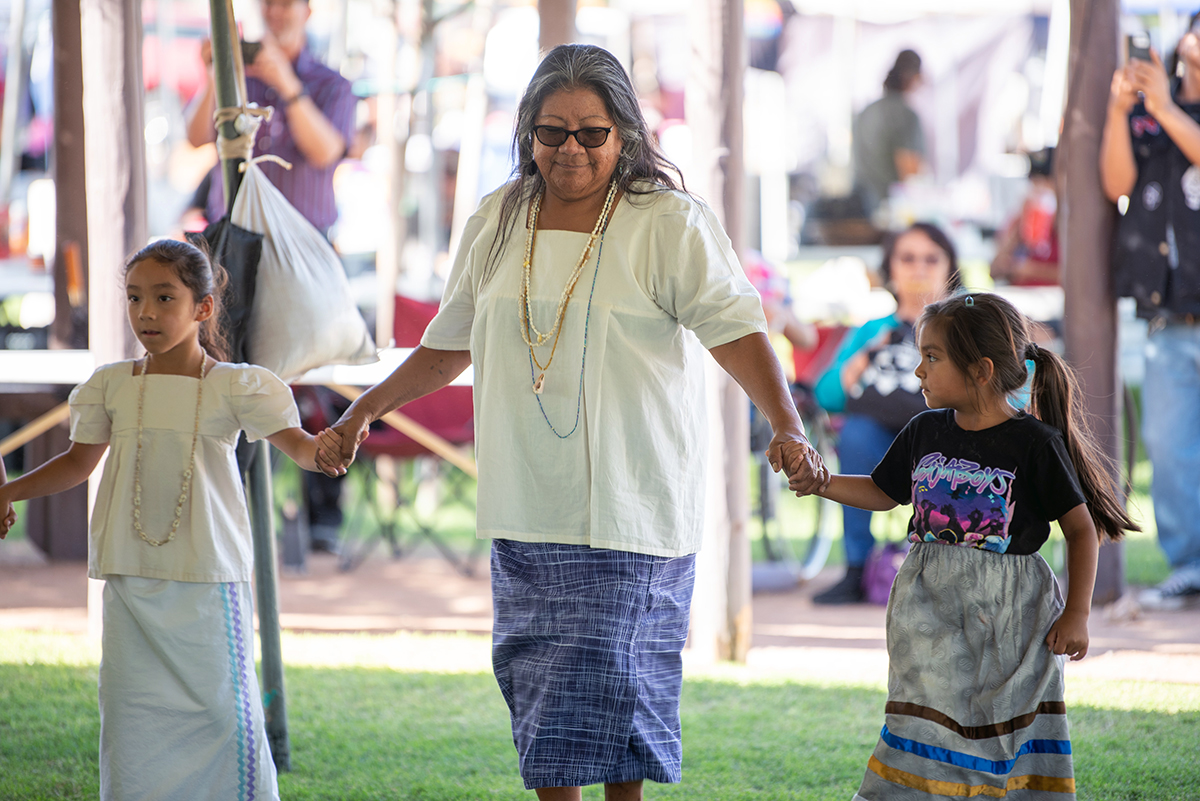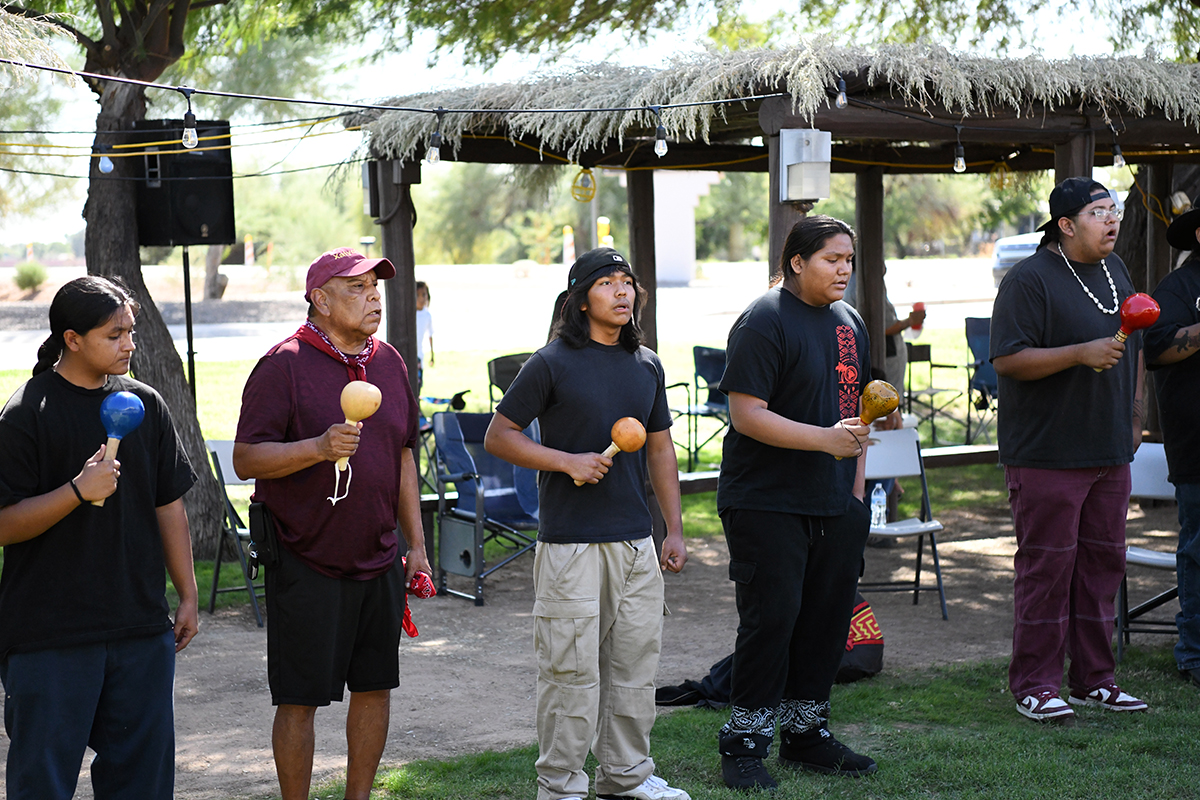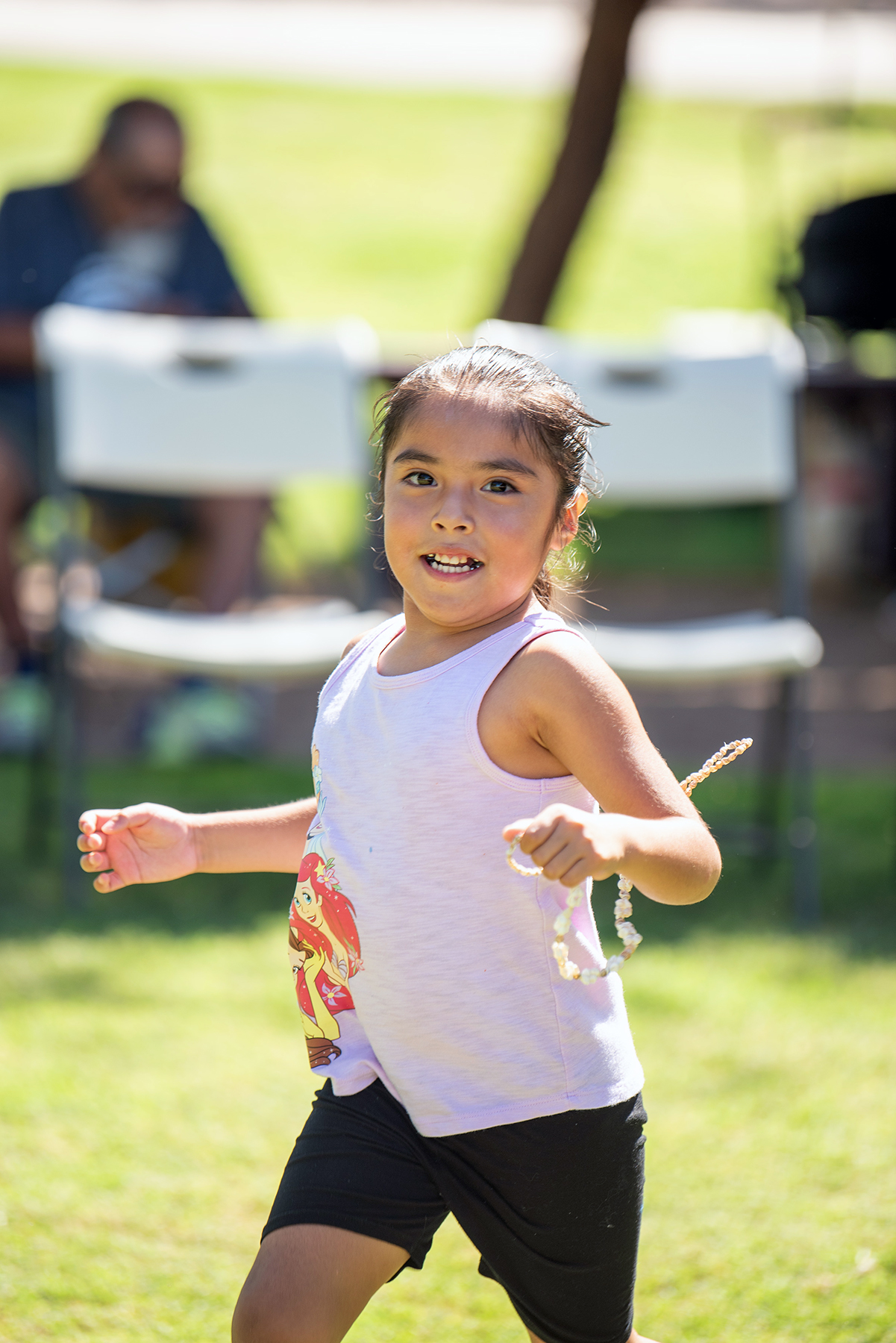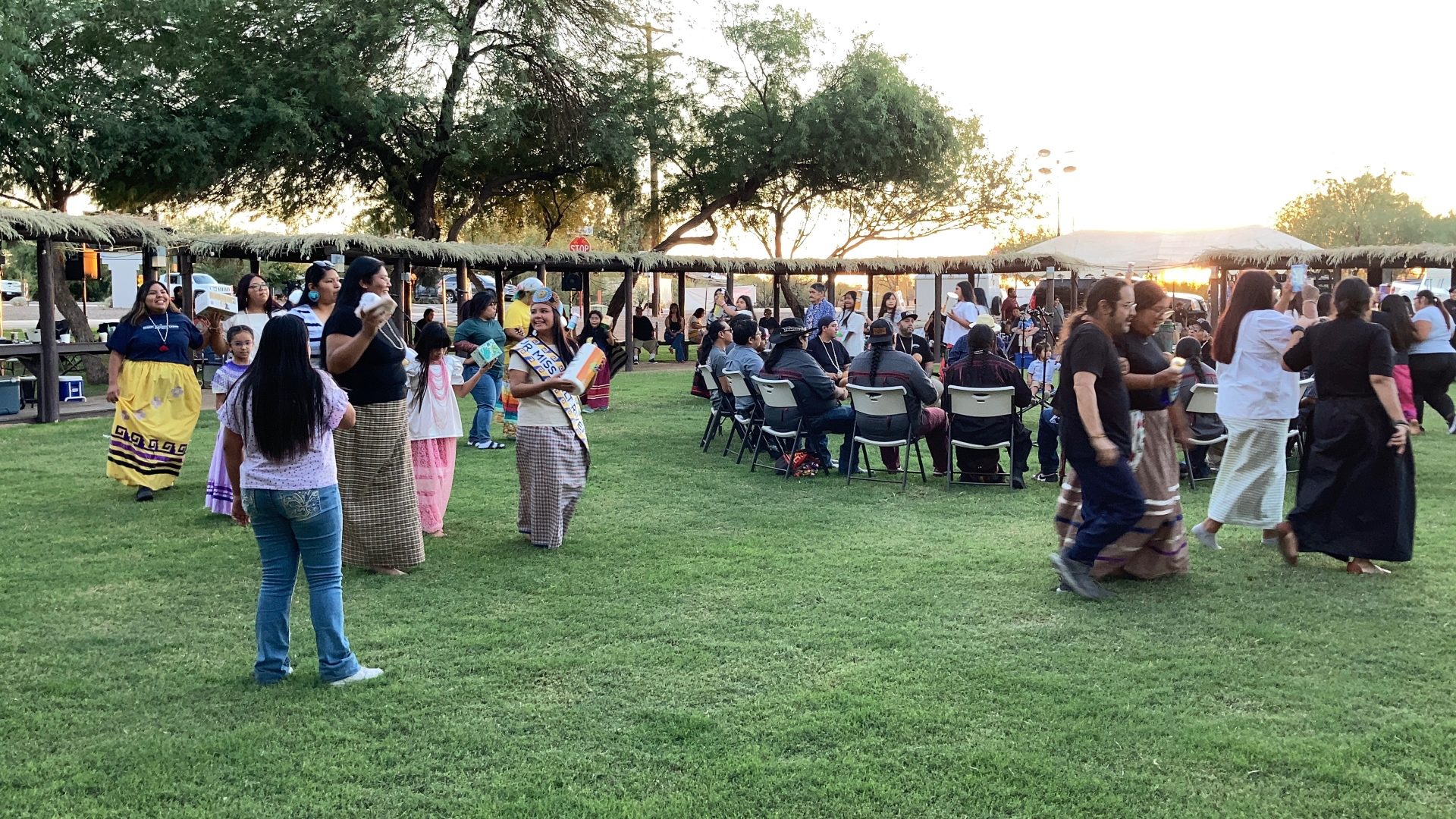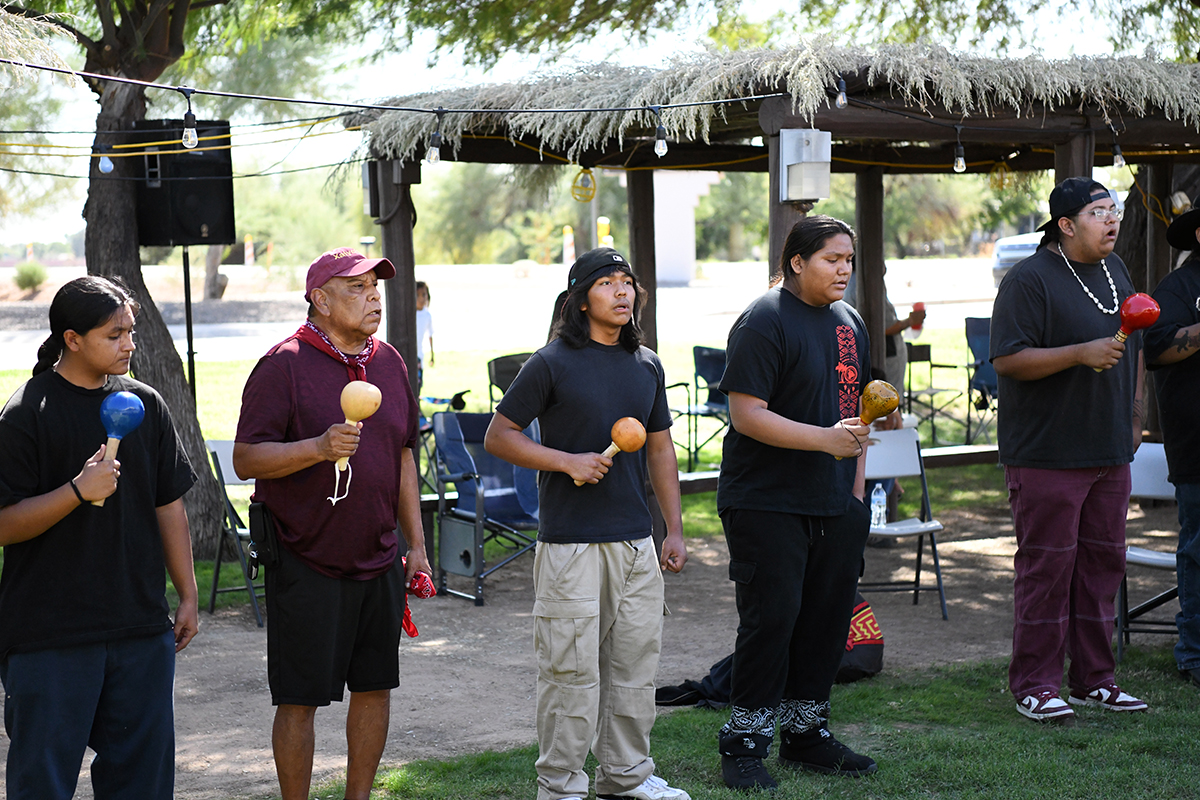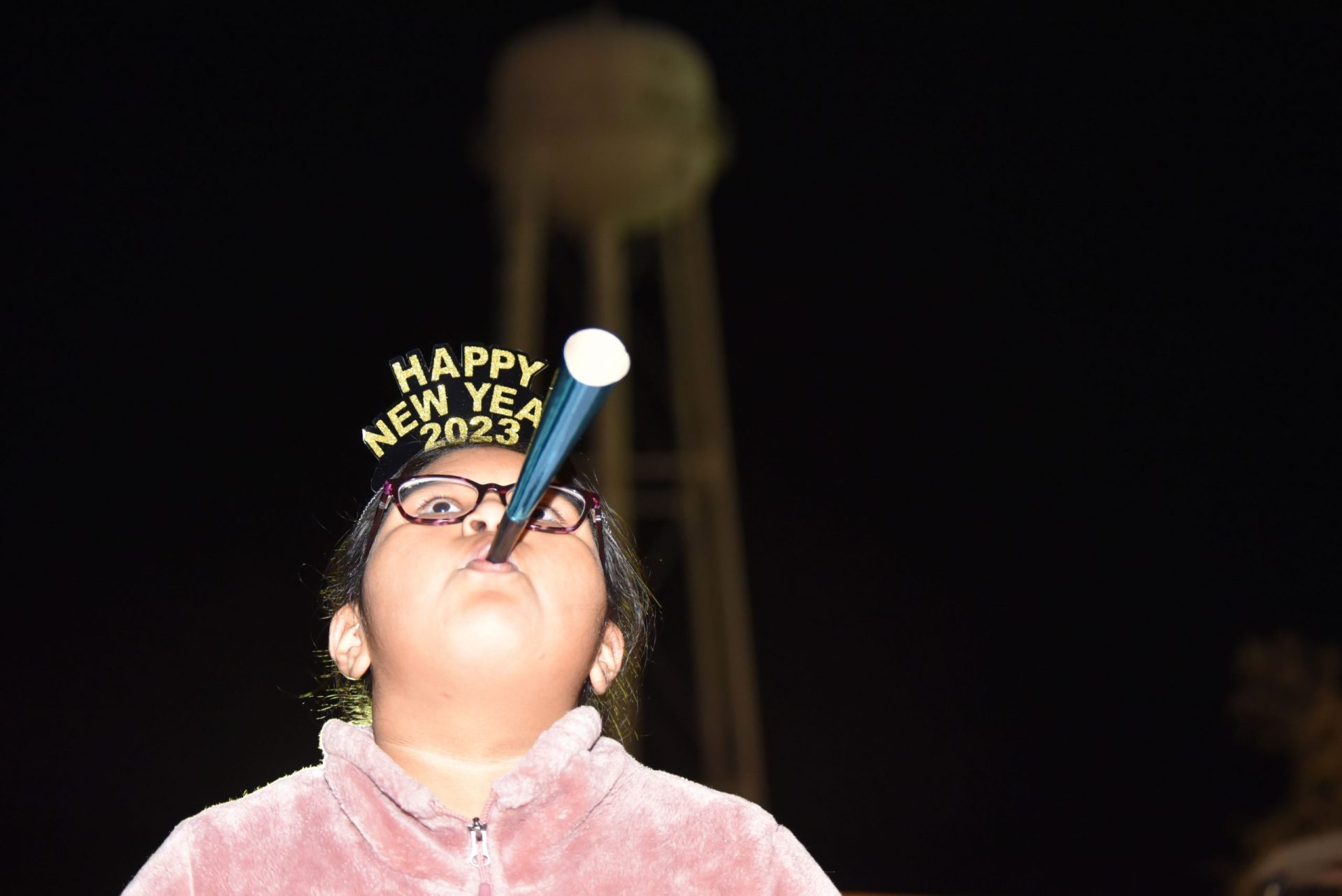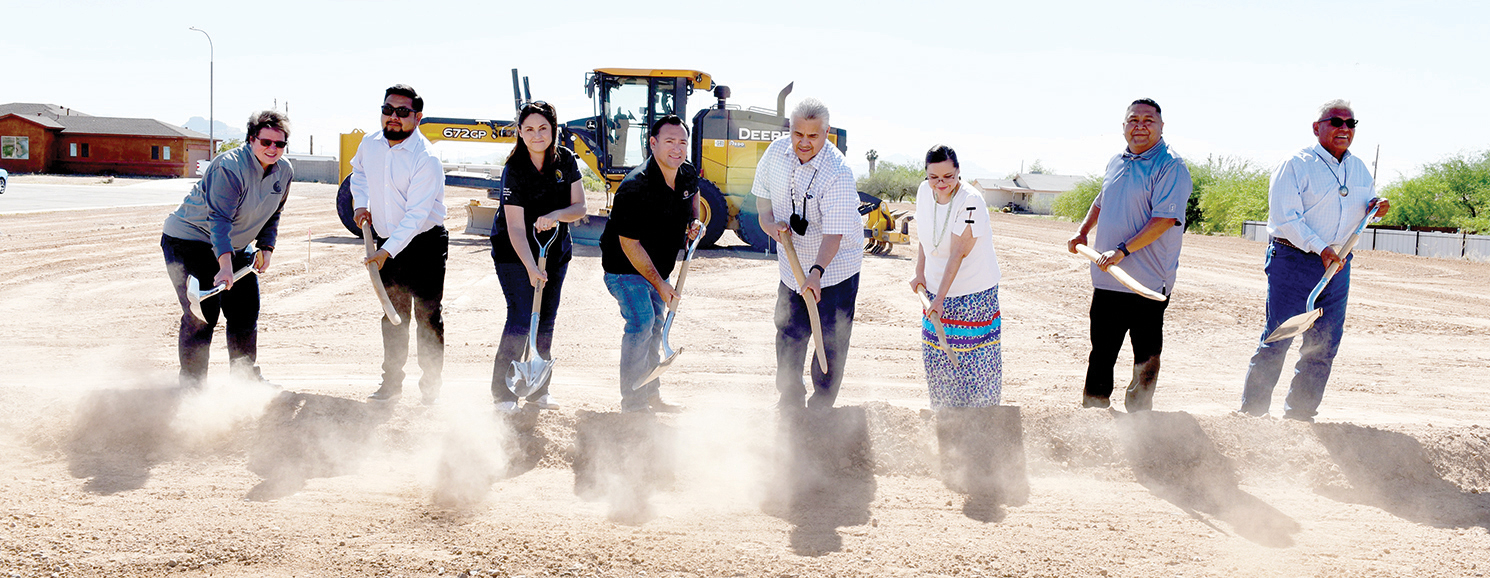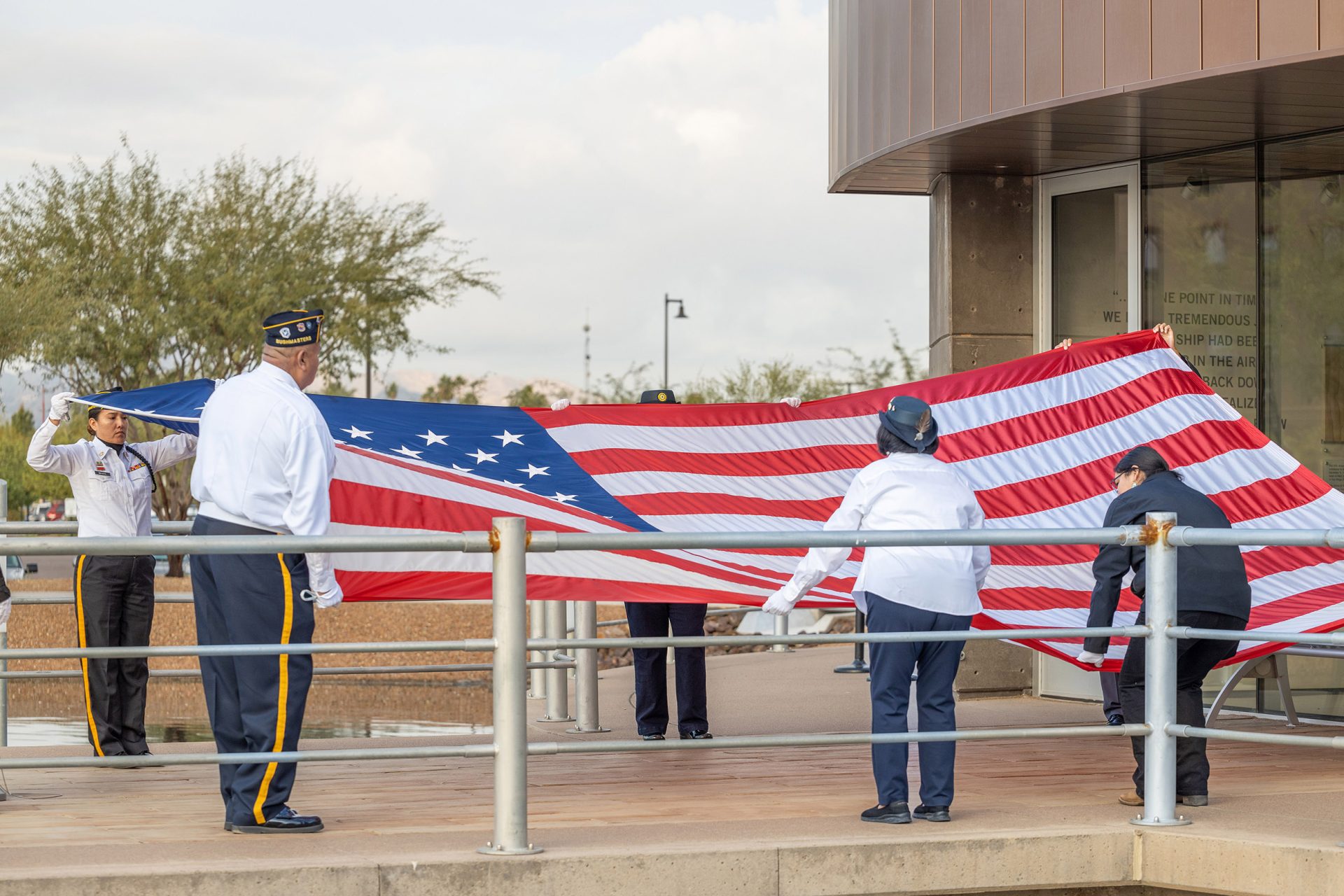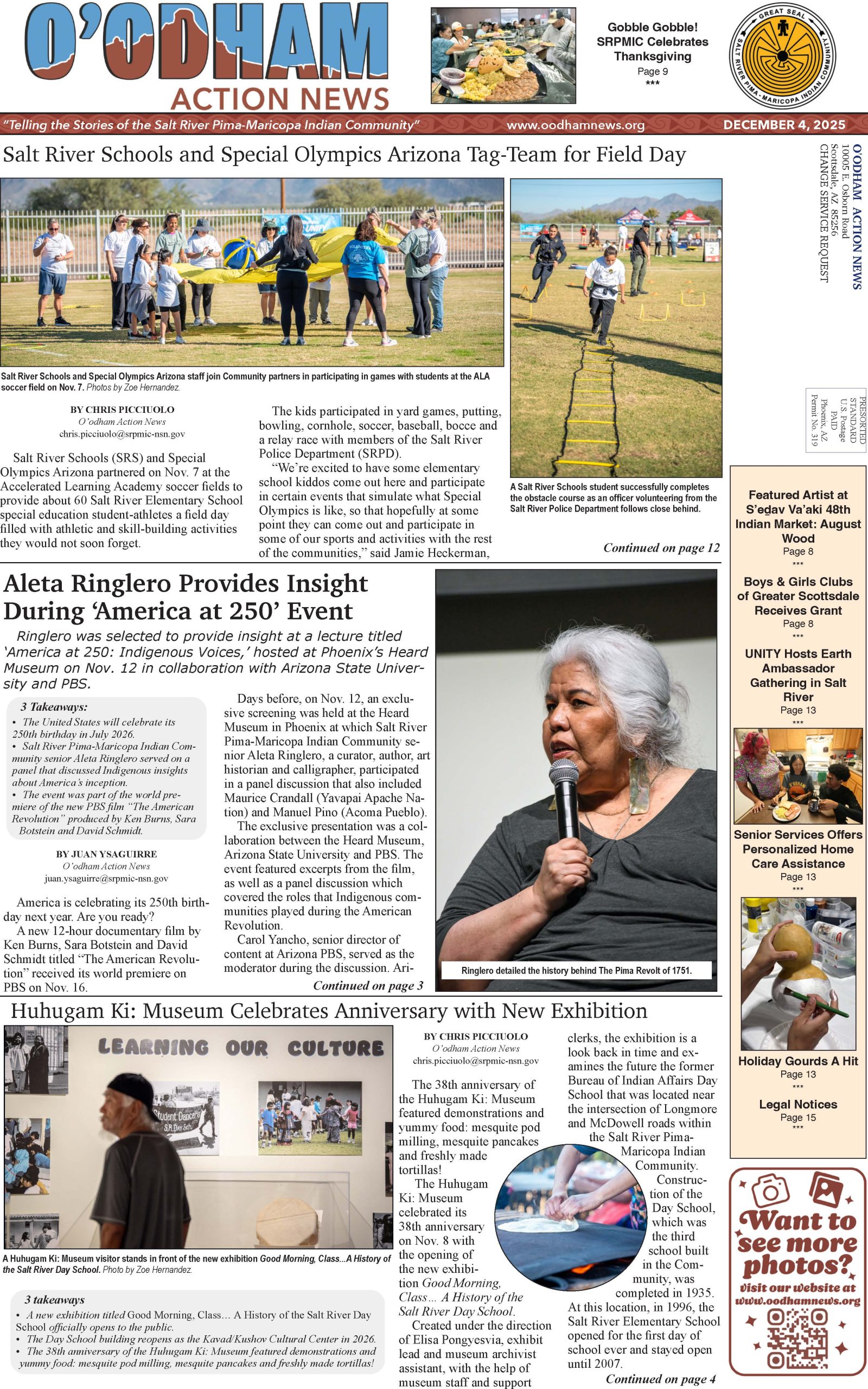VIEWS: 513
November 10, 2025Fall Piipaash Matasheevm
The Salt River Pima-Maricopa Indian Community celebrated Piipaash culture during this year’s fall social celebration, known by the people as Piipaash Matasheevm.
It was time to celebrate the people.
This year’s fall community social, known as Piipaash Matasheevm (the people gathering), brought together hoop dancers, gourd singers, basket dancers, other cultural performers, tribal royalty and more to Lehi, also known as God’s Country, for a day of celebration on Oct. 4.
Garfield Nish served as the emcee for this year’s community social. His usual co-host, Pacer Reina, was absent because he and his family were dealing with the recent passing of his father, Edward.
During commentary between performances, Nish requested that everyone bow their heads and send prayers and blessings to the Reina family during their emotional time.
“He’s usually right here with me,” said Nish about Pacer. “So what we want to do is to have a moment of silence for the family.”
The event kicked off with a sunrise blessing in the early morning, followed by welcoming messages from Salt River Pima-Maricopa Indian Community Council members Michael Dallas Sr. and Deanna Scabby at noon.
Michael Dallas Sr.
“I just want to give a round of applause to the [Piipaash Matasheevm] committee for all the hard work they do,” Dallas began. He also expressed his appreciation to the Public Works and Day Worker departments for keeping up with the maintenance of the Gathering Grounds. He then provided safe blessings to all, in addition to safe travels home for all visitors.
“Thank you to all those that came out today. It’s going to be a good day,” he concluded.
Deanna Scabby
Scabby thanked the committee and the many departments that helped put together the event. She also detailed one of the main focal points of why the Community gathers twice a year, in the spring and fall seasons.
“The elders envisioned this space as a special place,” began Scabby. “People come here all the time for peaceful moments, maybe to sing a song or to bring their families. This is specifically what the elders wanted, to bring back the Xalychidom Piipaash songs and dances here.”
She added, “They realized that we live in a different society now, the world is big, and our children are growing up in a society that has a lot of turmoil. But the grassroots of who we are as a people will keep us homed in to be grateful for the [ancestors] that we come from. Each one of us comes from special people.”
Scabby ended by reiterating that it is always valuable when parents, guardians and families raise children to be good to each other.
Throughout the social dance, free water was provided to all. Additionally, Community elder Arnold Makil provided free coffee.
Nish’s Commentary
Throughout the event and between performances, Nish spoke from the heart as he continually shared his opinion on how important it is not only to gather, but to keep the songs and dances a focal point of the Community.
“Our universal brother came up, the sun, during the sunrise blessing,” said Nish. “I appreciate all of those being a part of that, including the medicine people, which are a part of my family.”
He continued, “I think it’s time for all the medicine people to get together. We need to have all the medicine people get together in our communities, [those] who believe in the spiritual aspects.
“I always say, I’m a ‘traditional.’ Traditional to me is something that has been used several years back and has been forgotten. I bring those [traditions] back up today for our songs and knowing where they belong in our current days. Sometimes our songs are used for celebrations or memorials. A long time ago we spoke the same dialect, but then the first Spaniards came and changed things. [However], our songs are still here. Read the hieroglyphs, our words are there. The young people have got to know these things. We have to let them know where we come from.”
Nish continued to provide a brief snapshot of the history of the social gatherings. “Back then, when we started getting together to sing these songs, other communities came in to help us sing. This place was just gravel once upon a time. It was a long time coming, but we’re here today and it’s all actually beautiful. We have to really stick close to each other, shake each other’s hand and say hello.”
His remarks and comments of keeping the traditions alive among the many generations were well on display as Jorge Gonzales invited the youth to join him during his hoop dance performance. “I will be demonstrating the men’s hoop dance. This is a storytelling dance for those feeling sick, whether it be physically, emotionally or spiritually,” Gonzales said.
Gonzales credited the Lehi Boys & Girls Club with introducing him to hoop dance. “I have been dancing for 12 years and counting,” he said.
Additionally, the Hopi Traditional Dancers and the Cibecue Creek Apache Crown Dancers group danced underneath the ramada tent installed and maintained by Dev Begaye and his team, which is comprised of his grandchildren.
Bird Singing and Dancing by The River performed as the daytime sun slowly rested behind the mountaintops to bring in the night.
The group’s leader, Annette Vest, shared how important it is to represent both the Xalychidom Piipaash and the Akimel O’odham. Although the focus for the group is chiyer (bird songs), they showcased O’odham dances: the basket dance, what kind of flower, and a social dance. Each had a story to share as the dancers glided gracefully through the grass.
Later, dinner was served as the O’odham giveaway dance, which was sponsored by the Salt River Traditional Dancers, helped greet the moonlight. The dancing and singing ended at 10 p.m.
Story/Photos by Zoe Hernandez and Juan Ysaguirre.
